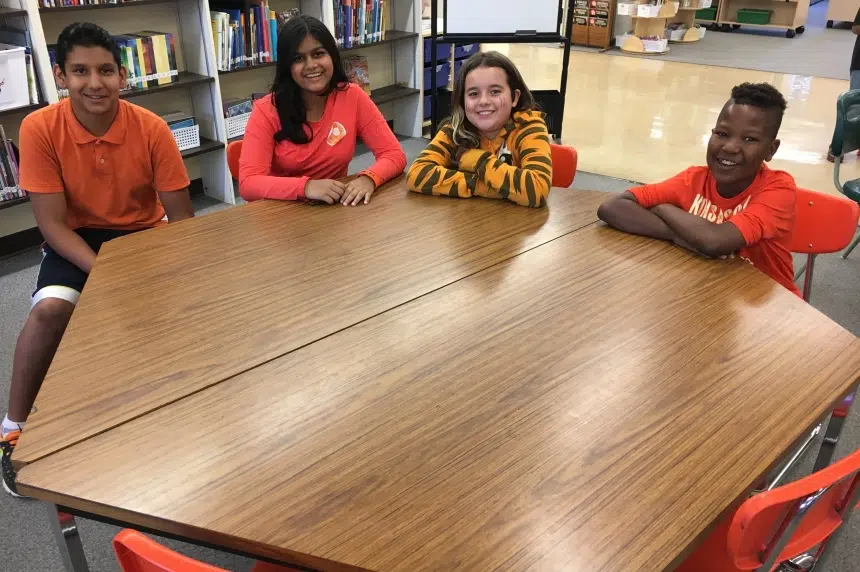Hundreds of students in Saskatoon wore orange Friday to remember what happened to First Nations students at residential schools across Canada.
“I feel sad,” said Myesha from Ecole Victoria School. “I respect the First Nations people.”
The school taught their students about Phyllis Webstad and her struggles when she was six-years-old.
Webstad chose to wear a new orange shirt for her first day of school and it was stripped off her back.
“It’s horrible, the Europeans would strip them (First Nations) of their culture and teach them their ways,” said Manan also from Ecole Victoria School.
“I’m against the residential schools and everything they stood for, everybody should be allowed to have their culture.”
It was the early 1970s and Webstad was the third generation of her family to attend St. Joseph’s Residential School in Williams Lake, B.C.
“Residential schools are not a good place,” said Manan. “We still have places like these in parts of the world and we need to get rid of all the bad places.”
Sophia was wearing an orange sweater at Ecole Victoria and feels First Nations have been treated very badly.
“I don’t like that,” she said.
“If somebody took my orange sweater I would feel very mad.”
From the 1880s until the last school shut down in 1996, Canada’s residential school system forced about 150,000 First Nations, Inuit and Metis children to attend church-run facilities that aimed to “take the Indian out of the child.”
“It’s kind of an emotional and happy time,” said Bertha Duquette, who’s a residential school survivor.
“Everything was taken away from you when you walk into the school, even your long hair.”
On Sept. 30, 2013, Webstad organized the first Orange Shirt Day in Williams Lake to acknowledge the harm that Canada’s residential school system has left in generations of indigenous families and their communities.
And every year on Sept. 30, Canadians are asked to wear orange as a sign of support.
with files from The Canadian Press











